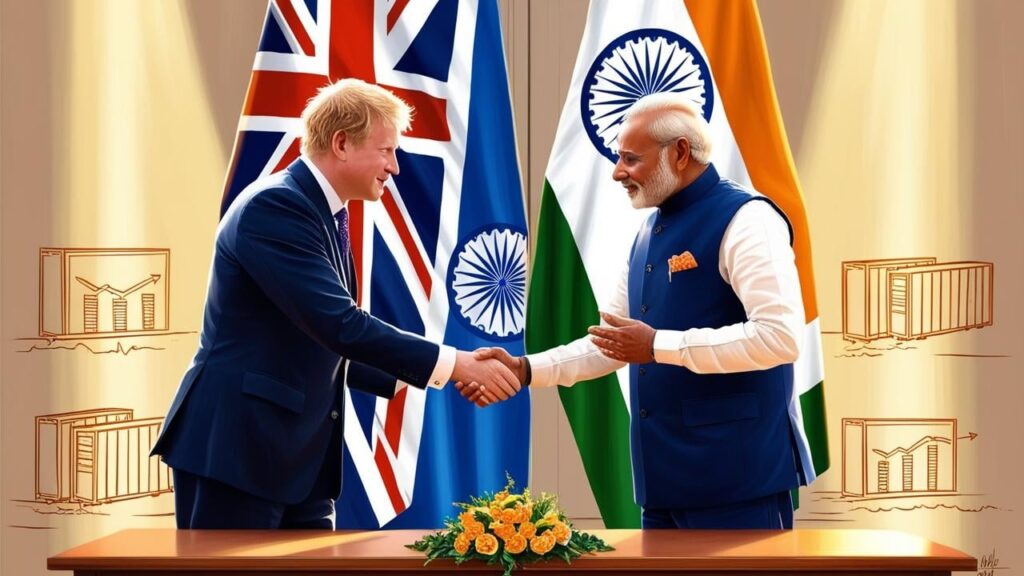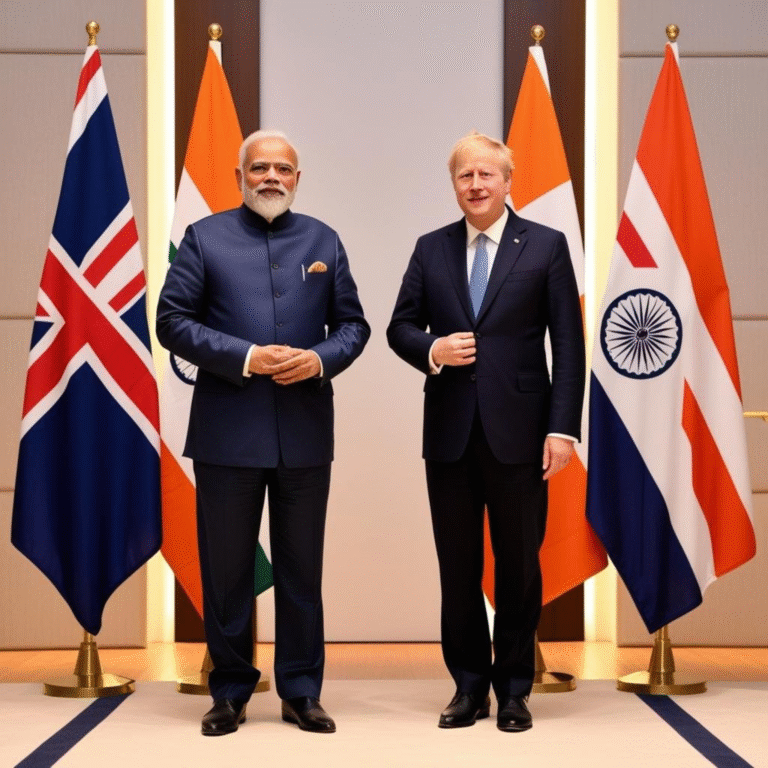
In a landmark moment for India’s global trade strategy, Prime Minister Narendra Modi and UK Prime Minister Sir Keir Starmer jointly announced the successful conclusion of the India–UK Free Trade Agreement (FTA)—an ambitious and comprehensive trade pact aimed at strengthening economic, commercial, and strategic ties between the two democracies.
This FTA, hailed as India’s most comprehensive bilateral trade agreement to date, is set to become a game-changer for the nation’s economy, particularly in sectors driven by exports and skilled services. The agreement promises to eliminate tariffs on nearly 99% of Indian exports to the UK, significantly boosting the global competitiveness of Indian products and creating thousands of new job opportunities.
Export Surge Across Core Sectors
Labour-intensive industries are expected to be the biggest beneficiaries. Sectors such as textiles, leather, footwear, gems and jewellery, marine products, sports goods, and toys now have significantly enhanced access to the UK market, improving India’s edge over competitors. Additionally, critical sectors such as engineering goods, auto components, and organic chemicals are also poised to benefit from the tariff concessions.
For MSMEs, the agreement opens up direct and indirect opportunities through enhanced market access, reduced compliance barriers, and streamlined procedures—boosting their participation in global value chains. In particular, MSMEs in FMCG, paints and coatings, and chemical raw materials may benefit from improved export competitiveness and supply chain linkages with the UK market. The expected rise in demand for quality products from these segments could further trigger investment and employment in India’s manufacturing ecosystem.

Big Gains for the Services Sector
India has secured one of the most liberalized market access agreements for services, including IT/ITeS, financial services, education, architecture, telecommunication, and other professional services. The pact also includes commitments from the UK on easing mobility for Indian professionals, such as business visitors, intra-corporate transferees, yoga instructors, chefs, and artists.
One of the standout victories is the three-year exemption from UK social security contributions for Indian employees working in the UK—a long-pending demand that will lead to major financial savings and make Indian service providers more cost-competitive.
Ease of Business and Market Confidence
In a significant step toward ensuring smooth bilateral trade, the FTA addresses non-tariff barriers, promoting transparency, regulatory coherence, and good business practices. These measures align with India’s domestic reforms under “Ease of Doing Business” and “Viksit Bharat 2047” initiatives, aiming for sustained, inclusive growth.
Commerce Minister Shri Piyush Goyal highlighted that the agreement will benefit not just large exporters but also farmers, fishermen, startups, and innovators, by opening up global markets while protecting domestic interests. Commerce Secretary Sunil Barthwal referred to the deal as a “gold standard” for future FTAs.
Bilateral Trade Outlook
Currently, the India–UK bilateral trade stands at around USD 60 billion, which both sides expect to double by 2030. With tariff-free access to UK markets and a reduction in business entry barriers, the agreement lays the groundwork for a surge in both goods and services exports, increasing India’s footprint in one of the world’s most advanced and high-value markets.
As global trade patterns shift, this FTA represents a strategic convergence of economic goals and mutual cooperation, with India poised to deepen its role as a “trusted trade partner” and innovation hub in the global economic landscape.
